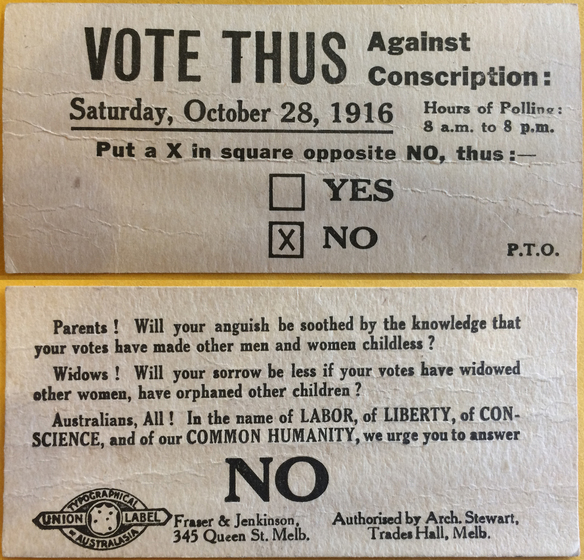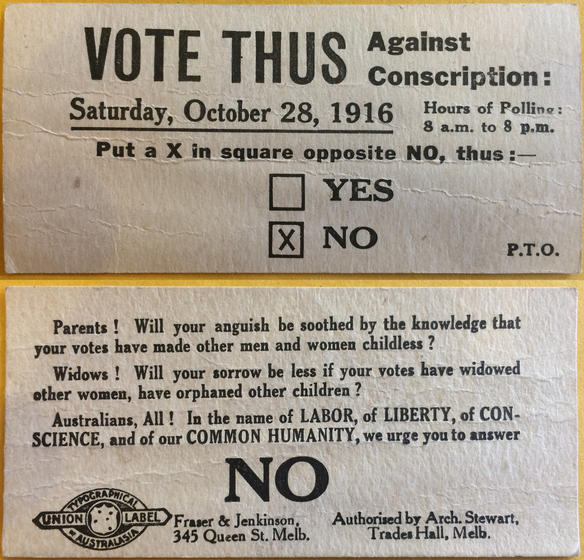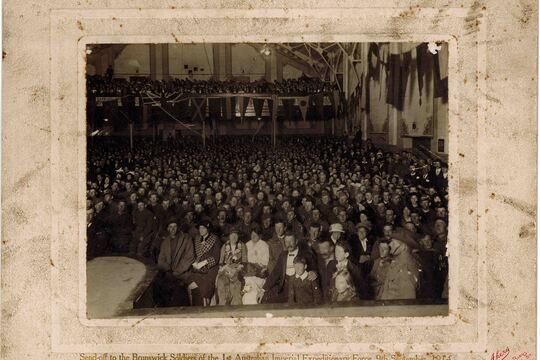The Two Referendums
Two referendums were held on conscription in Australia – in October 1916 and December 1917. Both returned majorities for ‘No’, the second by a slightly larger margin.
This result was a shock. Prime Minister Hughes, and most of the political establishment, had assumed that the result was a foregone conclusion. There had been strong patriotic enthusiasm for the war, and almost all of the media and all of the state governments bar one were in favour of conscription. The success by a small but organised coalition of activists was truly one ‘Against the Odds’.
With such a close result, many factors were important. Billy Hughes was particularly incensed by the ‘Irish vote’ in Australia, even though it was numerically small; historians like Joy Damousi have pointed to the influence of women voters. One particular mistake made by Hughes was to issue a regulation in October 1916 instructing eligible men to register for service. This was before the referendum was held – Hughes assumed that he would win, but the display of hubris in this ‘October surprise’ likely turned undecided voters against him.
While the first referendum was fiercely fought, it was just a prelude to the controversy that was caused in 1917. In May 1917, a federal election was held. Although he had been defeated at the first Conscription Referendum, Billy Hughes' new Nationalist Party won a strong victory in this election. The conduct of the war was a major campaign issue, and Frank Anstey’s Nationalist opponent focused on Anstey’s opposition to conscription.
Emboldened by his sweeping victory, Prime Minister Hughes decided to call a second referendum on conscription, to be held in December 1917, even though at the May election he had claimed that conscription was no longer government policy. This second campaign was even more intense than the first.
Once again, the electorate returned a ‘No’ vote and once again Brunswick and Coburg voters were solidly anti-conscription.

















